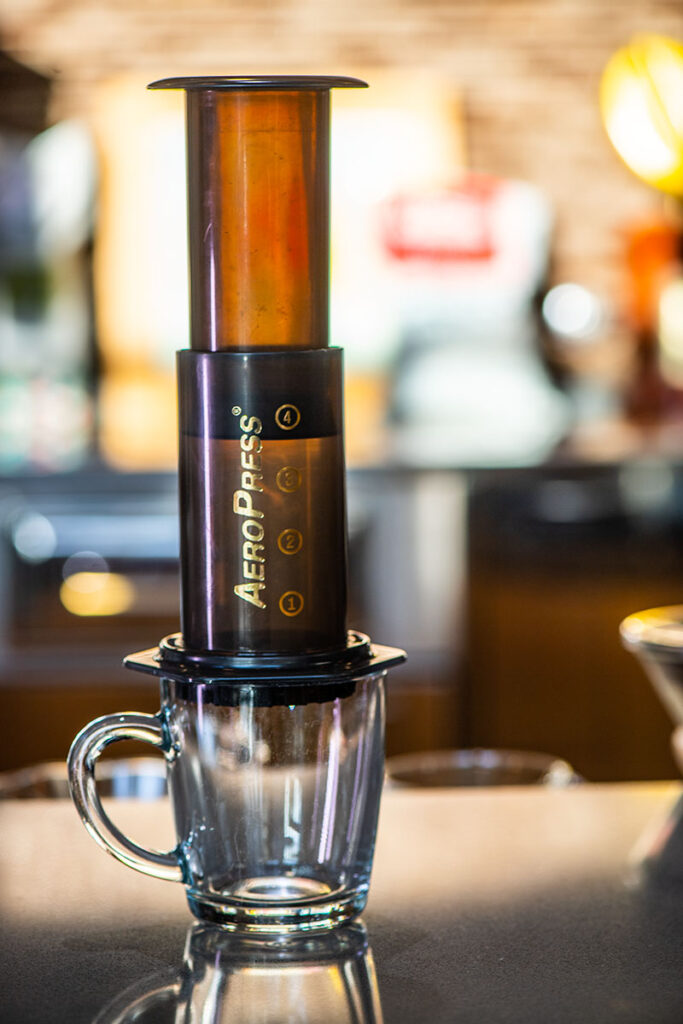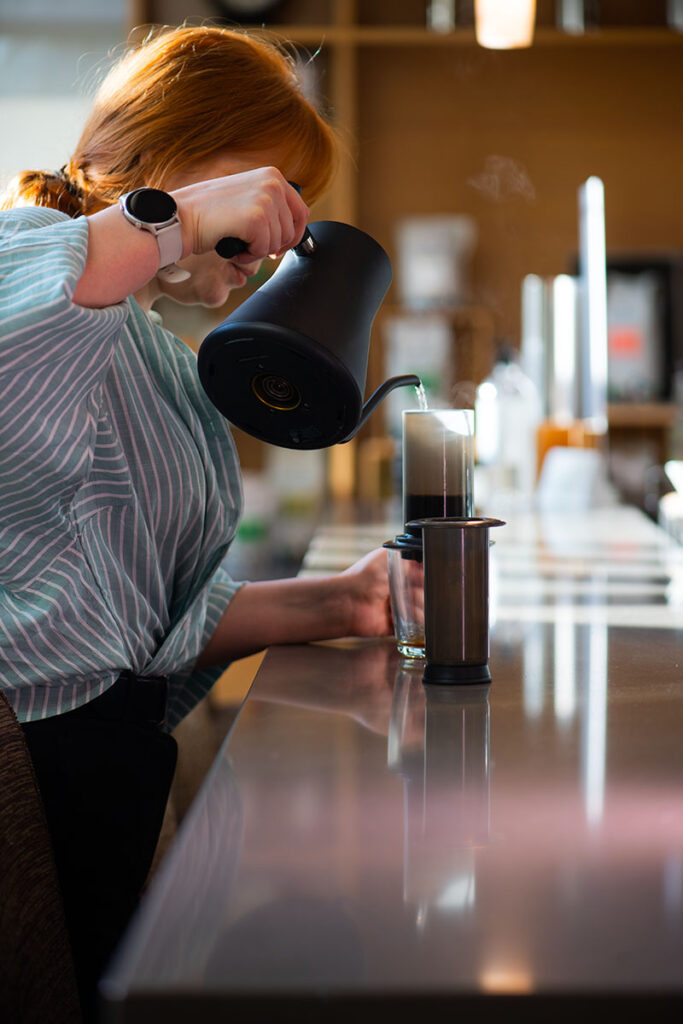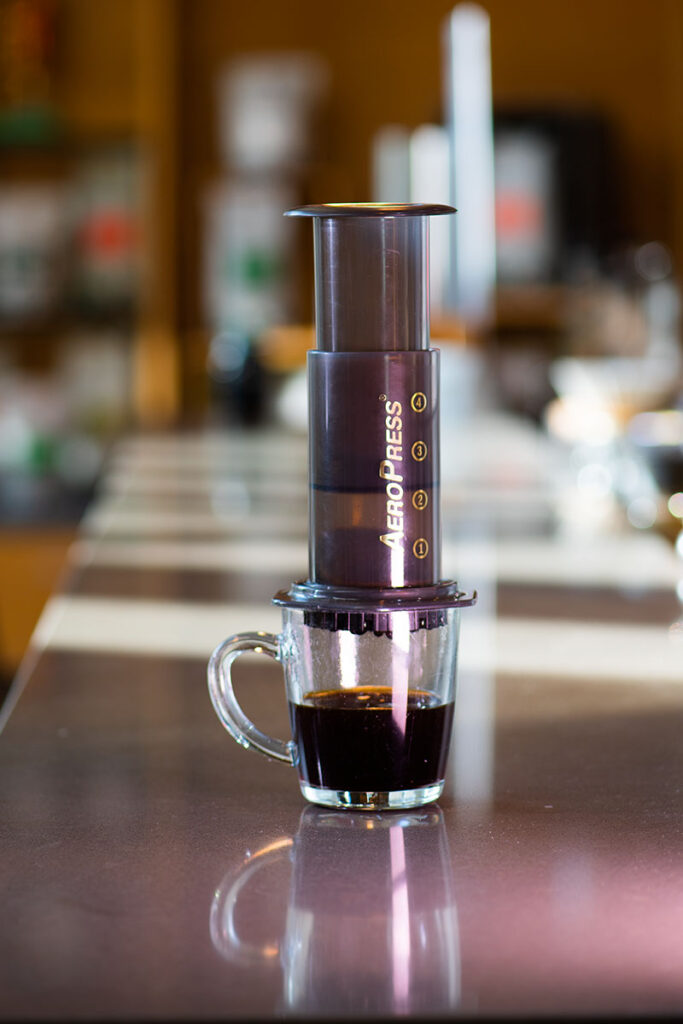A manual brewing method developed by Alan Adler and released in 2005. The Aeropress is known for its fast brewing time and easy portability. It combines immersion and pour-over brewing, and works well with a number of grind sizes, brewing times and water temperatures.

It uses air pressure to extract the flavour from the coffee grounds and it makes a full-bodied, smooth cup of coffee in a short period of time. The Aeropress is made of durable plastic, it’s lightweight and portable, and it’s easy to use.
The Aeropress consists of a cylindrical chamber where the coffee grounds are placed, a filter holder, and a plunger. The coffee grounds are placed in the chamber, hot water is added, and then the plunger is pushed down, which forces the water through the coffee grounds and through a paper or metal filter, which is placed in the filter holder. The brewed coffee is then ready to be served.
The Aeropress has become a popular choice among coffee enthusiasts, home baristas, and specialty coffee shops. It’s known for its simplicity, efficiency, and the quality of the coffee it produces. It’s easy to clean and it doesn’t require electricity, it’s a great option for those who are looking for a portable, affordable, and easy to use brewing device.


The Aeropress has a loyal following and it’s also used in the World Aeropress Championship, this event is a global competition that brings together baristas and coffee enthusiasts to showcase their skills and creativity using the Aeropress.
Do you have a term or definition you’d like us to add to the glossary? Let us know using this form.


